How to Perfectly Use Kitchen Knives: Choosing, Cutting and Cleaning
The knife is a fundamental tool in the kitchen, but it is also essential to know how to choose the right one, know how to use it correctly and clean it in the right way so that it lasts over time. Here is a simple and practical guide to learn how to use knives like a professional.
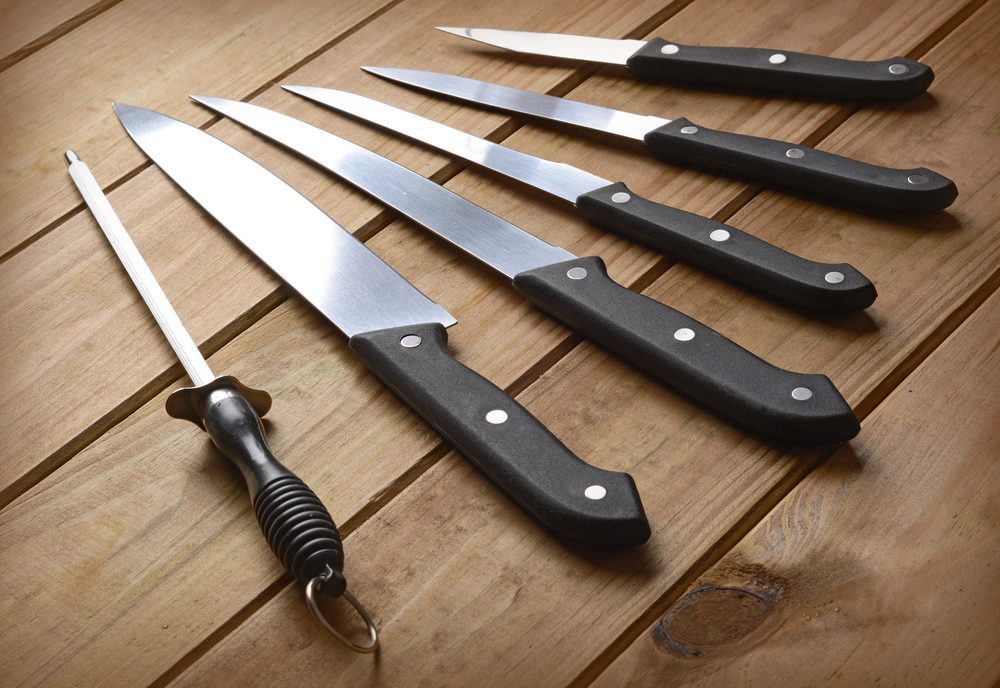;Resize,width=742;)
Cooking well does not only mean having quality ingredients, but also using the right tools and knowing how to do it correctly. And what is more important, when you prepare some recipe, than a knife? This tool is essential for eating at the table, but also for the preparation "behind the scenes".
You are used to always using the table knife for a matter of practicality, but if you want to take your cooking to a higher level and work like a kitchen professional, you must learn that knives are not all the same. There are all kinds of knives, more or less long, serrated or smooth blade, for bread or for filleting fish, so it is important to know how to buy the right model.
But, more importantly, it is learning how to use them correctly, both to make more precise cuts of the ingredients and to handle them safely. It is also good to know how to clean your knives after use, so that they can last a long time. Here is a guide on how to choose, hold, use and clean each type of knife perfectly.
How to Choose the Right Knife
It all starts with choosing the right knife, because there are different types for each type of cut: remember that there is no best knife (obviously net of material and quality), but only the right knife. When you go to buy kitchen knives, therefore, consider what type of cuts you use most often or want to try – for example diced, sliced, julienne or brunoise – and choose the knives suitable for that technique.
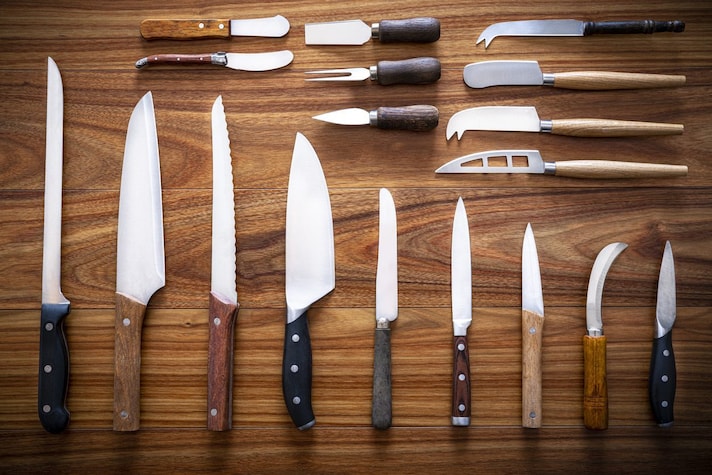
Alternatively, there are universal knives designed to cut almost anything, but since they are multipurpose knives, the results are slightly inferior to those you would get with specific knives. In general, a good basic kit to improve the cutting of your ingredients should include:
- A universal knife (13 cm) for a wide range of foods.
- A chef's knife (20-23 cm) for chopping, mincing, slicing and dicing.
- A vegetable knife (8 cm) for peeling, cutting and finishing foods that you hold in your hand.
- A serrated knife for bread, pastries, fruit and tomatoes.
- A meat knife.
- A fish filleter.
- Electric steel or home knife sharpener.
As for quality, a good knife to be of a high level must have a sufficiently sharp and resistant blade and, above all, that it is not too flexible and that, in the case of large knives, does not bend when cutting more resistant foods (for example large pieces of meat). From the point of view of materials, however, the most common knives are in standard stainless steel, a fairly resistant material that does not require a lot of maintenance, but if you want to raise the level a little, look for knives in Damascus steel, a more luxurious and expensive material that however makes the knives extremely durable and sharp.
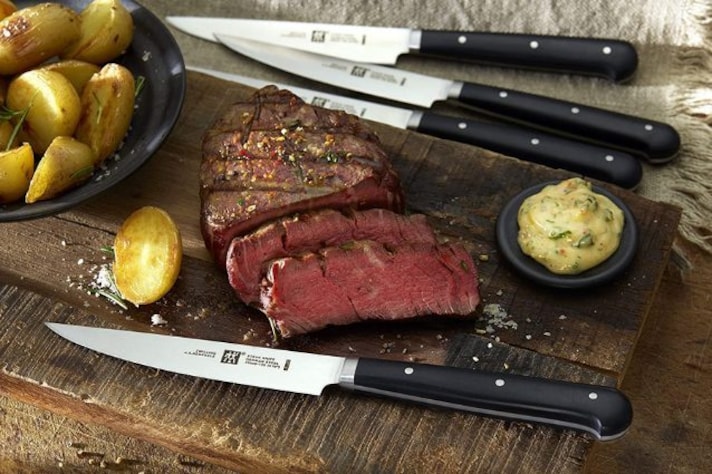
How to Cut The Right Way
Buying quality tools is a good starting point, but you also have to do your part: it is useless to buy specific knives and then not know how to use them correctly! Learning to use knives in the right way means elevating your kitchen, but also working safely without cutting yourself with sharp blades.
The main technique you need to learn is the so-called "hammer grip": you have to hold the handle of the knife with four fingers, with the index finger against the thumb on the front of the tool. Another version of this way of holding the knife is the "blade grip", in which the last three fingers grip the handle while the thumb and index finger rest on the blade. In general, remember that, in both cases, to avoid cutting them, you must keep the index finger bent and you must never rest it on the blade.
Also remember that the tip of the knife should always be kept facing down, as if it were a sort of pivot from which you move along the ingredient to be sliced. Cut calmly, without haste, because speed is only the result of experience, and always use both hands: with one hold the knife, with the other hold the ingredient still applying light pressure; if you are afraid of cutting them you can keep your fingers facing inward and your knuckles facing the blade.
An aspect that is underestimated by everyone and yet is fundamental is the cutting board: compact, always clean and perfectly sanitized, whatever its shape or material, it is the best friend of those who want to learn to use the knife like a real chef. The cutting board, in fact, offers a stable support surface and also if you sanitize it well it is cleaner than the kitchen counter, where you happen to place a bit of everything.
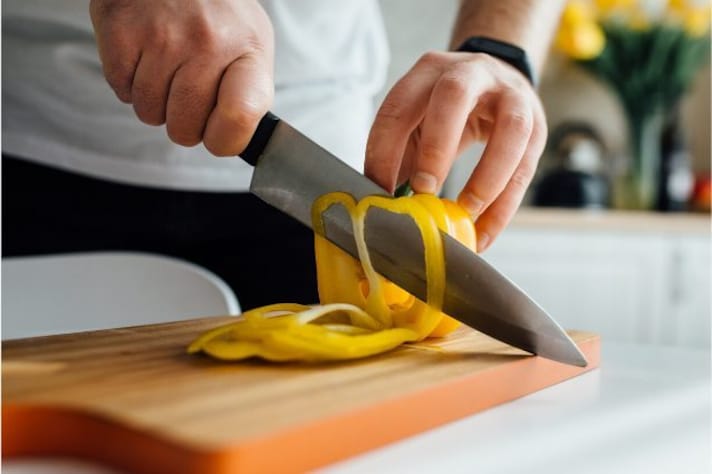
How to Clean and Maintain Your Knives
Speaking of cleaning and hygiene, like all kitchen tools, knives also need good maintenance, or perhaps even more since they are delicate objects, especially from the point of view of the blade. Furthermore, constant maintenance also means extending the life of your knives, which if well kept will last longer.
First of all, never put knives in the dishwasher, because they are one of those objects that should never be put in the appliance. Instead, wash them by hand, with hot water and dish soap, without soaking them and taking care to remove all food residues and any stains.
Pay particular attention to the drying phase, a key moment because if the knives remain wet they could develop rust, but they could also dull the blade, leave stains or halos and make it less sharp. Use a cloth, remove all the water and then put the knives back in the drawer. Periodically remember to sharpen the blade of the knives with one of the various possible methods: a dull blade not only will not cut well, but could also be dangerous because it would slip during cutting with the risk of hurting your hands.
;Resize,width=767;)


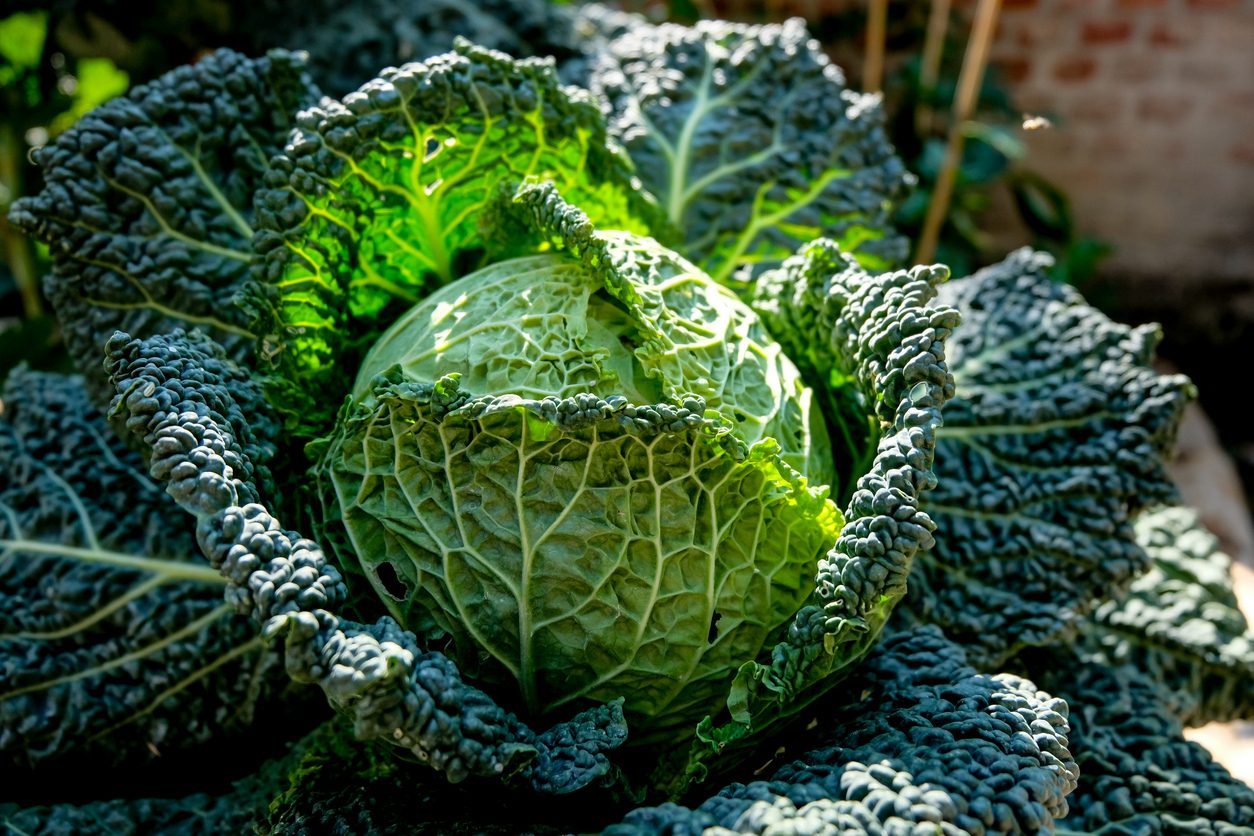;Resize,width=712;)
